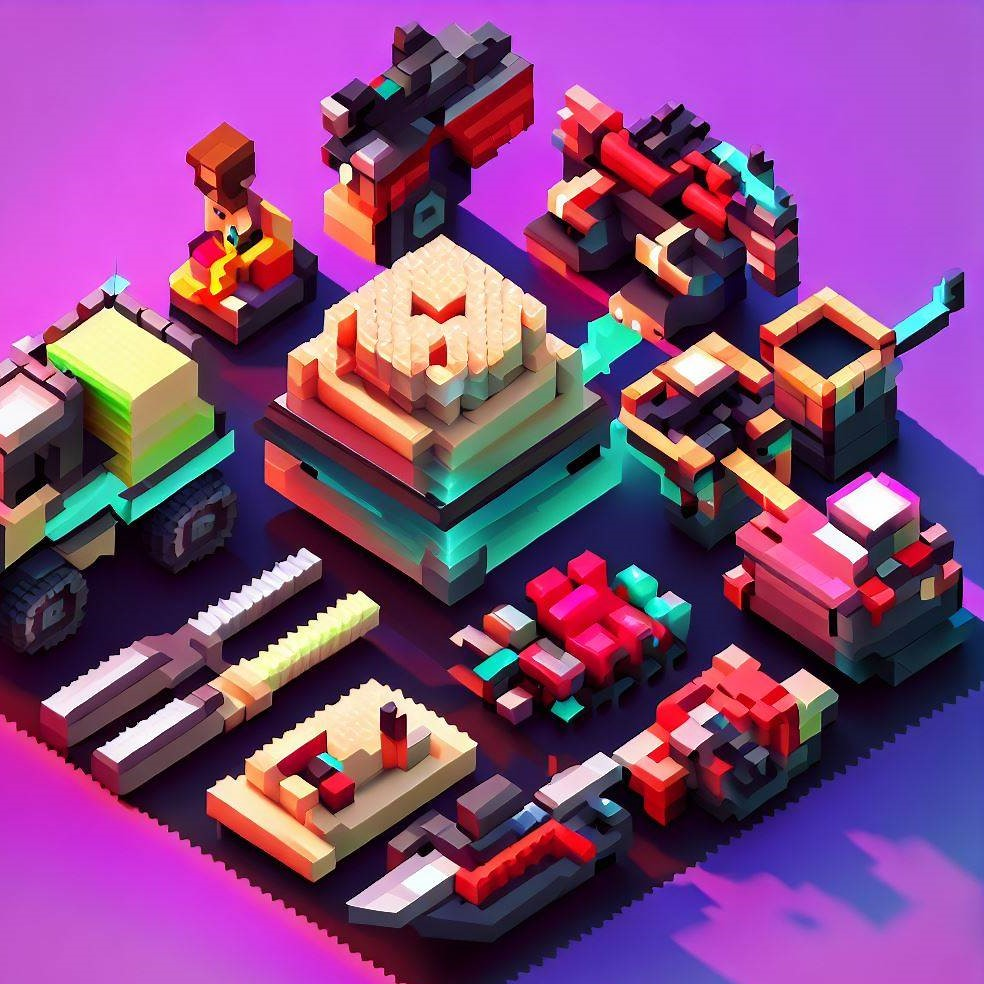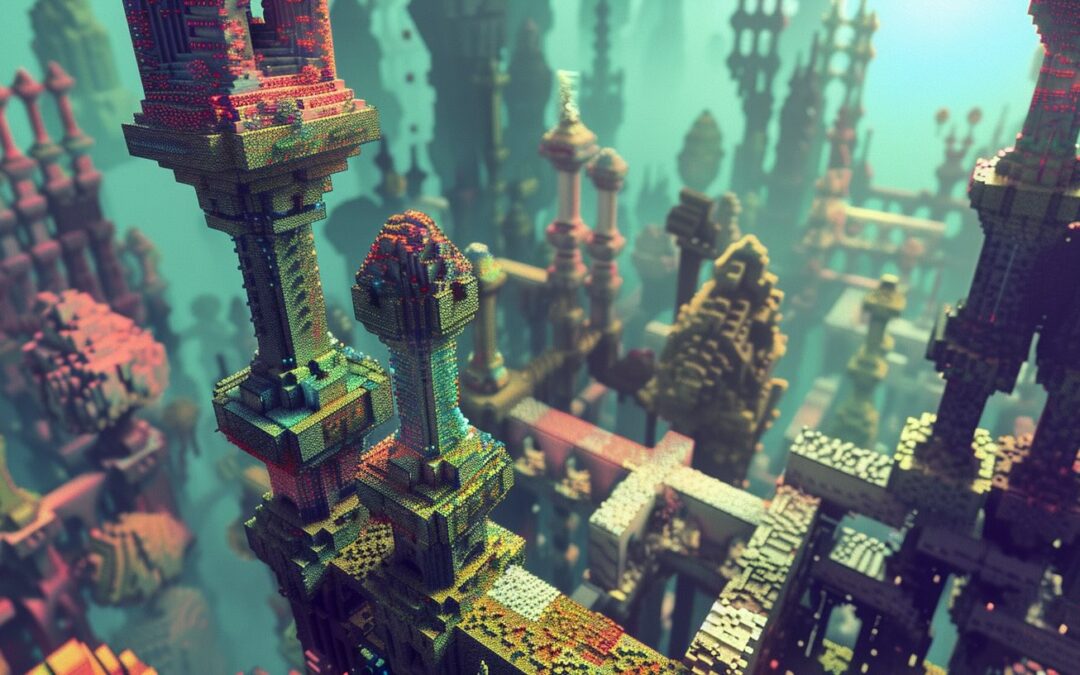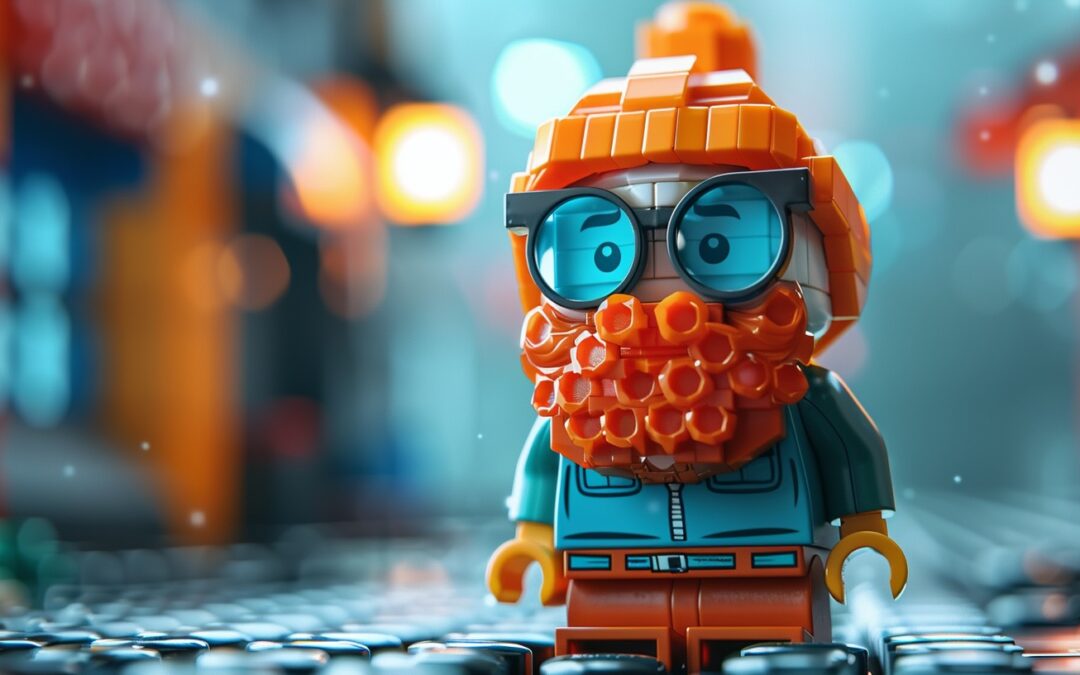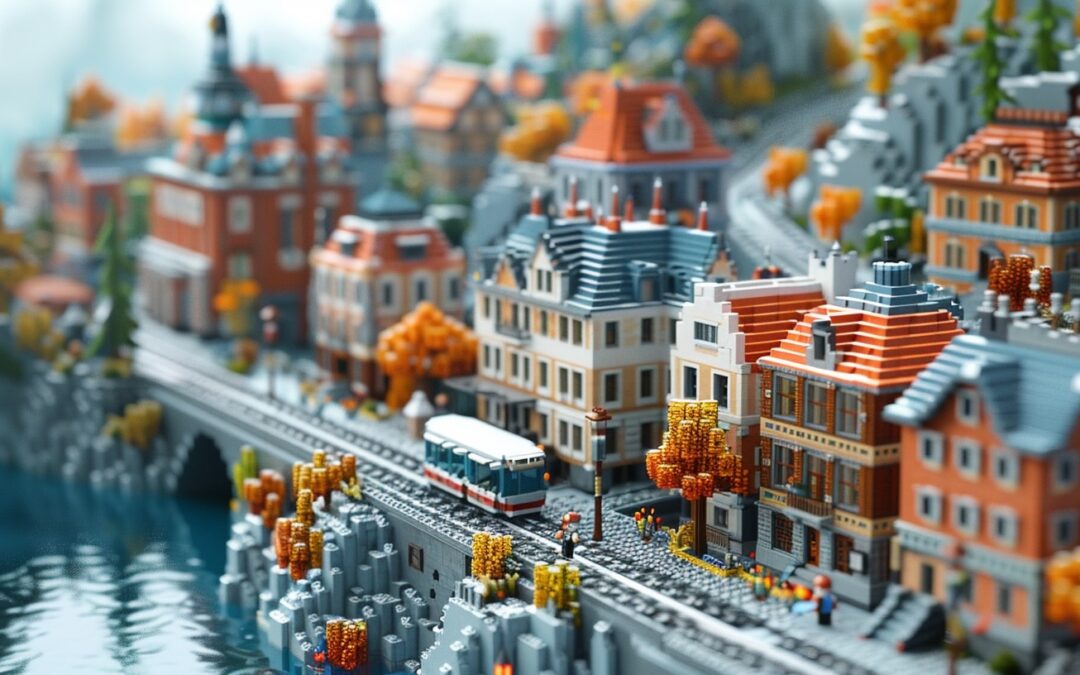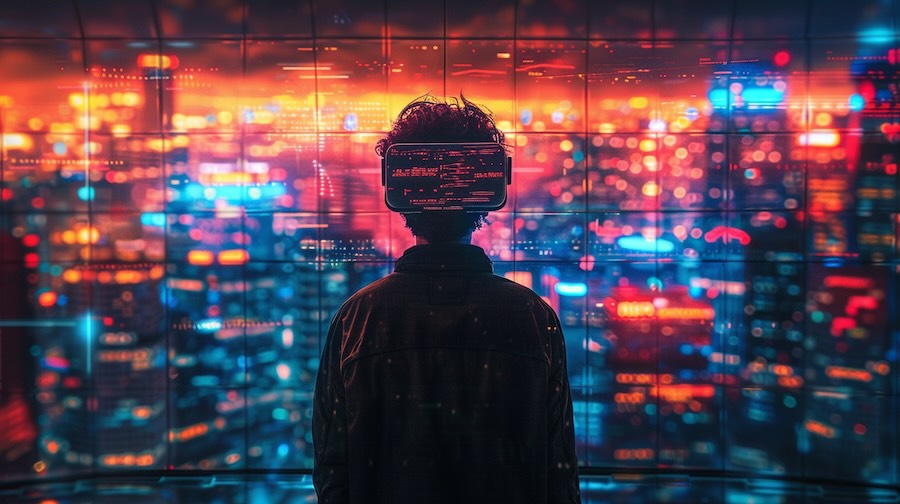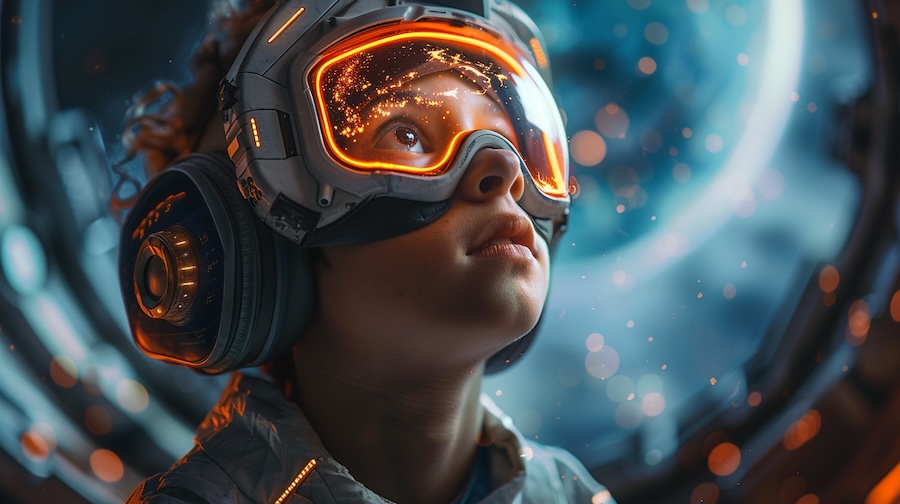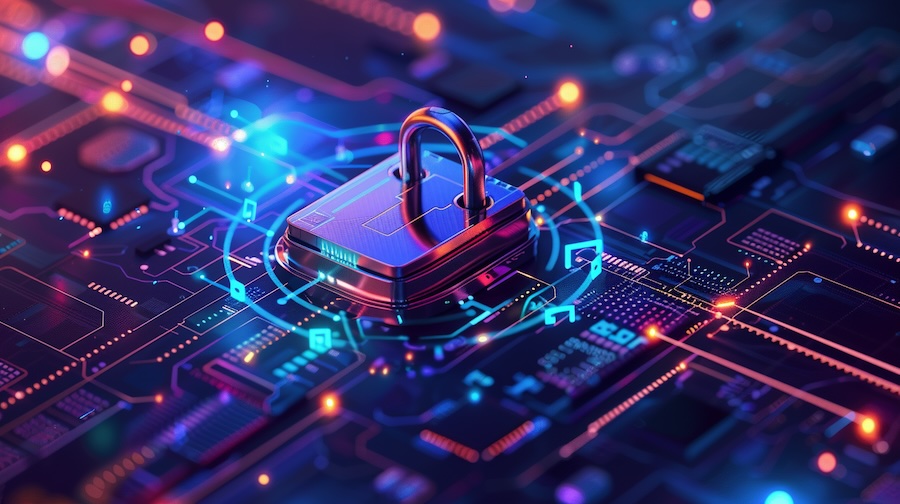The metaverse is a virtual-shared space where users can interact with each other and digital objects in a seemingly real way. In-game objects, collectibles, and virtual properties can all be represented on a blockchain using NFTs (non-fungible tokens), which are digital assets. In this blog post, we will explore how to create and trade NFT game items for the metaverse, and why they are important for the future of gaming and entertainment. We will also show you some examples of NFT game items that already exist in the metaverse, and how you can join this exciting new world of digital creativity and commerce.
Introducing the EU-funded project “V2B: Creating NFT Opportunities on Metaverse for Art VET Trainees” and our project reference number: 2022-1-DE02-KA210-VET-000080828. Coordinated by L4Y Learning for Youth GmbH in collaboration with Adana Cukurova Guzel Sanatlar and EMC Services Ltd, this blog post “Creating Metaverse NFTs: A Step-by-Step Guide for Young Innovators” serves as a captivating introduction. Discover how this project aims to revolutionize the future of digital assets and creativity. Explore the project’s homepage for more information and exciting updates.
What are NFTs and the Metaverse?
The internet is entering a new phase of innovation and creativity, where digital assets and virtual worlds are becoming more valuable and accessible. Two concepts that are driving this change are NFTs and the Metaverse. In this essay, we will explain what these terms mean, how they are related, and why they matter for the future of the internet.
What are NFTs?
NFTs stand for non-fungible tokens, which are unique digital certificates of ownership that exist on the blockchain. The blockchain is a permanent and secure ledger that records transactions and data in a decentralised way. NFTs can be created for any digital file, such as an image, video, audio, or game item. By minting an NFT, the creator or owner can prove the originality and authenticity of their digital asset, as well as sell or trade it on various platforms.
NFTs are useful because they solve the problems of digital scarcity and piracy. Unlike traditional digital files, which can be easily copied and shared, NFTs cannot be duplicated or altered. They also provide a way for creators to monetize their work and connect with their fans and collectors. Some examples of popular NFTs include digital art, sports highlights, music albums, virtual fashion, and memes.
What is the Metaverse?
The Metaverse is a theoretical concept of a digital 3-D world that you enter via a virtual reality headset or other devices. In this world, you have an avatar that represents you, a home that you can decorate with your digital assets, and hundreds of spaces that you can visit and interact with other users. You can also do work, play games, shop, socialise, and experience various forms of entertainment and education in the Metaverse.
The Metaverse is useful because it offers a more immersive and engaging way to access the internet. Instead of switching between apps and websites on a screen, you can seamlessly navigate between different activities, locations, and data in a 3-D environment. The Metaverse also enables more creativity and collaboration among users, as well as new forms of expression and identity.
How are NFTs and the Metaverse related?
NFTs and the Metaverse are closely related because they both rely on blockchain technology and the tokenization of assets. Tokenization is the process of converting real or digital assets into tokens that can be stored, transferred, and traded on the blockchain. By tokenising assets, users can have more control, ownership, and access to them in the digital world.
NFTs are a key component of the emerging Metaverse, where they serve as the building blocks and currency of the virtual economy. NFTs enable users to create, own, collect, and display their digital assets in the Metaverse, as well as gain exclusive access to certain locations or events. They also facilitate identity, community, and social experiences in the Metaverse, as users can customise their avatars, join clubs or groups, and share their interests and passions with others.
Why do NFTs and the Metaverse matter?
NFTs and the Metaverse matter because they represent a new paradigm for how we interact with the internet and each other. They offer more opportunities for innovation, creativity, participation, and empowerment for both creators and consumers of digital content. They also challenge our notions of value, ownership, and identity in the digital age.
NFTs and the Metaverse have already attracted a lot of attention from various industries and sectors, such as art, music, fashion, sports, gaming, education, entertainment, media, and business. They have also generated a lot of revenue and investment from both individuals and corporations. According to DappRadar, the total sales volume of NFTs reached over $2.5 billion in the first half of 2021. According to VentureBeat, the total funding for Metaverse-related startups reached over $1 billion in 2020.
Why are NFTs Important for the Metaverse?
NFTs can represent anything from virtual real estate to in-game items to art and collectibles. NFTs have several advantages over traditional digital assets, such as scarcity, ownership, provenance, and interoperability. In this blog post, we will explore how NFTs play a vital role in the development and growth of the metaverse and why they are important for its future.
NFTs as Virtual Property
Virtual property is one of the primary use cases for NFTs in the metaverse. Virtual property refers to any digital asset that has a spatial dimension and can be occupied or used by users in the metaverse. Examples of virtual property include land parcels, buildings, rooms, furniture, vehicles, and more. Virtual property can have various functions and purposes, such as hosting events, creating content, displaying art, running businesses, or simply enjoying leisure activities.
NFTs enable users to own and trade virtual property securely and transparently. NFTs are unique, tamper-proof digital assets that provide proof of ownership and authenticity for virtual property. They enable users to transfer their assets across various metaverse platforms and applications, compatible with any blockchain-based system. This creates a more open and interoperable metaverse where users can move freely and seamlessly between different virtual worlds.
NFTs as In-Game Items
Another use case for NFTs in the metaverse is in-game items. In-game stuff are any digital items that users can use or consume while taking part in a game or simulation in the metaverse. Examples of in-game items include weapons, armour, potions, skins, pets, and more. In-game items can have various effects and benefits for users, such as enhancing their performance, customising their appearance, expressing their personality, or increasing their social status.
NFTs enable users to own and trade in-game items more fairly and efficiently. NFTs, owned by users, offer more value and utility than traditional in-game items, allowing for free trading on peer-to-peer marketplaces. This creates a dynamic, diverse gaming ecosystem in the metaverse, providing users with more choices.
NFTs as Art and Collectibles
A third use case for NFTs in the metaverse is art and collectibles. Art and collectibles are any digital assets that have aesthetic or sentimental value for users in the metaverse. Examples of art and collectibles include paintings, sculptures, photographs, music, videos, GIFs, memes, comics, cards, stamps, coins, and more. Art and collectibles can serve various functions and purposes for users, such as expressing their creativity, supporting their favourite artists, preserving their memories, or simply having fun.
NFTs enable users to own and trade art and collectibles more securely and transparently. NFTs are unique digital art and collectibles. They cannot be copied or altered, providing proof of ownership and originality. They enable users to display and share their art in various ways in the metaverse, creating a vibrant cultural scene.
How to Create NFT Game Items for the Metaverse
NFT game items can be used in various games and platforms and can also be sold for real money or cryptocurrency in online marketplaces. But how can you create your own NFT game items for the metaverse? Here are some steps to follow:
Choose a game or platform that supports NFTs
Many games and platforms allow users to create and use NFT game items, such as ATARI GAMES, FINAL FANTASY XVI, Where Is Shaun?, RollerCoaster Tycoon, League of Kingdoms, Minecraft, Zepeto, Fortnite, or DMarket. You can choose one that suits your preferences, skills, and goals. Some games and platforms may require you to have a developer account or pay a fee to create NFTs, while others may be free or open-source.
Design your NFT game item
You can use various tools and software to design your NFT game item, such as VoxEdit, Photoshop, Blender, Unity, Unreal Engine, or Sketchfab. You can also use existing models or templates from online libraries or marketplaces, such as Sandbox, OpenSea, Rarible, or Decentraland. Likewise, you should make sure that your NFT game item is original, creative, and appealing to your target audience. You should also consider the technical aspects of your NFT game item, such as its size, format, resolution, animation, functionality, and compatibility with different games and platforms.
Mint your NFT game item
Minting is the process of creating and registering your NFT game item on a blockchain network. You will need to choose a blockchain network that supports NFTs, such as Ethereum, Tezos, Binance Smart Chain, or Flow. To mint NFTs, you need a digital wallet like MetaMask, Coinbase Wallet, Trust Wallet, or Ledger, and connect your wallet to a platform like Mintable, OpenSea, or Dapper Labs, paying a fee in cryptocurrency.
Market and sell your NFT game item
Once you have minted your NFT game item, you can market and sell it in various ways. You can list it on online marketplaces that specialize in NFTs, such as OpenSea, Rarible, or DMarket. You can also promote it on social media platforms such as Twitter, Instagram, TikTok, or Discord. Furthermore, you can also collaborate with other creators or influencers who can showcase or endorse your NFT game item. You can set your own price for your NFT game item in cryptocurrency or fiat currency. You can also choose to auction it off to the highest bidder or accept offers from potential buyers.
Creating NFT game items for the metaverse can be a fun and rewarding experience. It can also be a way to express your creativity and passion for gaming. However, you should also be aware of the risks and challenges involved in creating and selling NFTs. You should do your research and due diligence before investing in any project or platform. You should also respect the intellectual property rights of others and avoid plagiarism or infringement. Likewise, you should also be careful with your personal information and security when dealing with online transactions. Finally, you should be responsible and ethical when creating and selling NFTs.
How do I Trade NFT Game Items in the Metaverse?
In this part, we will explain what NFT game items are, why they are valuable, and how you can trade them in the metaverse.
What are the NFT game items?
NFT game items are digital items that are used or displayed in online games and metaverses. They can be weapons, armour, vehicles, pets, clothing, accessories, or anything else that enhances the gaming experience. NFT game goods are held by the players and stored on a decentralized network, which ensures their authenticity and scarcity. This is in contrast to traditional game assets, which are managed by the game producers and can be replicated or destroyed at any time.
NFT game items can have different attributes, such as rarity, quality, level, stats, and history. They can also have different functions, such as giving bonuses, unlocking features, or enabling interactions. Some NFT game items can even generate passive income for their owners by producing resources or rewards.
Why are NFT game items valuable?
NFT game items are valuable for several reasons:
- They provide utility and enjoyment for the players who use them in their favourite games and metaverses.
- They represent the players’ identity and personality in the virtual world.
- Not only that, but they reflect the players’ achievements and skills in the game.
- They enable the players to express their creativity and style by customizing their avatars and environments.
- They create a sense of belonging and community among the players who share similar interests and values.
- Likewise, they offer an opportunity for investment and speculation for players who want to profit from the growing demand and limited supply of NFT game items.
How to trade NFT game items in the metaverse?
Trading NFT game items in the metaverse can be done in various ways:
- Through dedicated marketplaces that allow users to buy and sell NFT game items using cryptocurrencies or fiat currencies. Some examples of these marketplaces are OpenSea, DMarket, and Ubisoft Digits.
- Through peer-to-peer transactions that allow users to exchange NFT game items directly with each other without intermediaries. This can be done using smart contracts or escrow services that ensure security and fairness.
- Through cross-game or cross-metaverse transactions that allow users to transfer NFT game items from one game or metaverse to another. This can be done using bridges or protocols that enable interoperability and compatibility among different platforms.
Examples of NFT Game Items in the Metaverse
Let’s explore some examples of NFT game items in the metaverse and how they can enhance the gaming experience and create new opportunities for players and developers.
Virtual Real Estate
One of the most popular types of NFT game items in the metaverse is virtual real estate. The phrase “virtual real estate” refers to lands or buildings that users can own and personalise in a virtual environment. Some examples of platforms that offer virtual real estate are Decentraland, The Sandbox, and Somnium Space.
Virtual real estate can be used for various purposes, such as creating immersive environments, hosting events, displaying art, or generating income. For example, users can rent out their virtual spaces to other users or advertisers, or sell them for a profit. Virtual real estate can also increase in value over time, depending on the demand and popularity of the location.
In-Game Items and Collectibles
Another type of NFT game item in the metaverse are in-game items and collectibles. These are unique digital assets that can be used or collected within a specific game or virtual experience. Examples include weapons, armour, vehicles, skins, pets, cards, and trophies.
In-game items and collectibles can enhance the gameplay and provide a sense of achievement and ownership for players. They can also be traded or sold to other players, creating a secondary market and a new source of income. Some games that feature in-game items and collectibles as NFTs are Axie Infinity, Gods Unchained, CryptoKitties, and NBA Top Shot.
Art and Music
Art and music are another type of NFT game item in the metaverse. Digital creations, like paintings, sculptures, songs, or albums, can be displayed or played in the virtual world, as seen in the successful auctions of Beeple’s Everydays and Kings of Leon’s album.
Art and music can enrich the metaverse with cultural diversity and creativity. They can also provide new ways for artists to showcase their work and reach a global audience. Moreover, they can enable artists to retain ownership and control over their creations, as well as earn royalties from every sale or stream.
NFT game items in the metaverse are digital assets that can be owned and traded on a blockchain. They enhance gaming experiences, create a digital economy, and monetize digital content, including virtual real estate, collectibles, art, and music.
NFT game items in the metaverse are not only fun and exciting, but also innovative and valuable. They represent the future of gaming and the internet, where users can create and own their own digital worlds.
Resources
- VoxEdit website. (n.d.). VoxEdit.
- Manager, C. (2023, August 31). NFT Art samples: Unique Digital Assets – RetroStyle Games. RetroStyle Games.
- Dmarket. (n.d.). GitHub – dmarket/blockchain: DMarket is an NFT and in-game items platform that unlocks the multi-billion-dollar digital asset economy for game developers, players, esports clubs, brands, streamers and fans everywhere. We are creating a metaverse that connects gaming and esports, brands and their audiences, real experiences and virtual valuables. In this metaverse, you can get drops while watching streams, craft NFT memorabilia of your favorite team or brand, trade for an in-game skin, use it in the game and then exchange it for an opportunity to play a match with an esports celebrity. GitHub.

